Sprinkler versus hose: which is better for your lawn?
Considering the heat wave we’re going through, our lawns need all of the moisture they can get. That means sprinkler systems and hoses are running on overtime at the moment — it’s necessary to keep our lawns looking green and healthy. Plus, it stops you from learning how to revive dead grass. But, have you ever paused to wonder which is the better method for your watering your grass?
There are actually pros and cons to each, which affects the overall cost, effort and effectiveness. So if you’re considering switching from one method to the other, you need to first fully understand the differences to be sure you’re making the right decision. If you want to learn all about it, here, we list out all of the pros and cons of a sprinkler system versus a hose, and which is ultimately better for your lawn.
Pros of sprinkler system
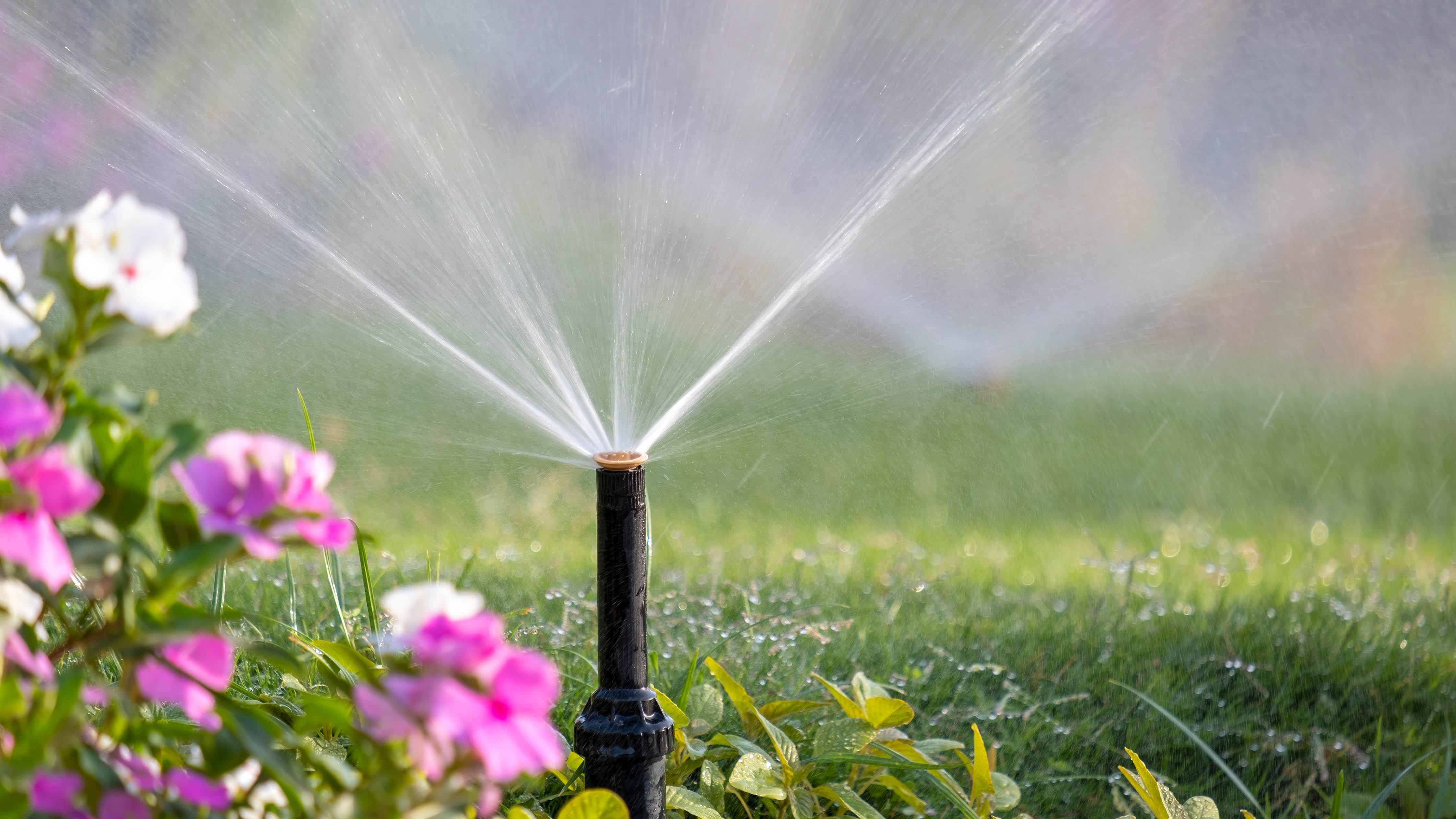
1. Automated — First of all, the fact that a sprinkler system does it all for you is, no doubt, the biggest and most well-known benefit. You can save yourself the time and effort of getting out a hose and working your way around the yard yourself — which could save hours a week, depending on the size of your lawn. A sprinkler system takes care of the entire chore for you, and gets it done faster too, because the entire area is watered at once, rather than sporadically.
2. Can vary itself depending on the weather or season — If you get a smart sprinkler system or install a smart sprinkler controller, such as the Rachio 3: 8 Zone Smart Sprinkler Controller ($182, Amazon), it can adjust the run time based on the weather or even season. So, if there’s plenty of rainfall, it won’t water unnecessarily, and in the peak of summer, it will give your grass more moisture. Such a feature saves you from keeping an eye on your sprinkler system, making sure it remains relevant. Some can even be linked up to soil moisture sensors, to make sure it’s not overdoing it.
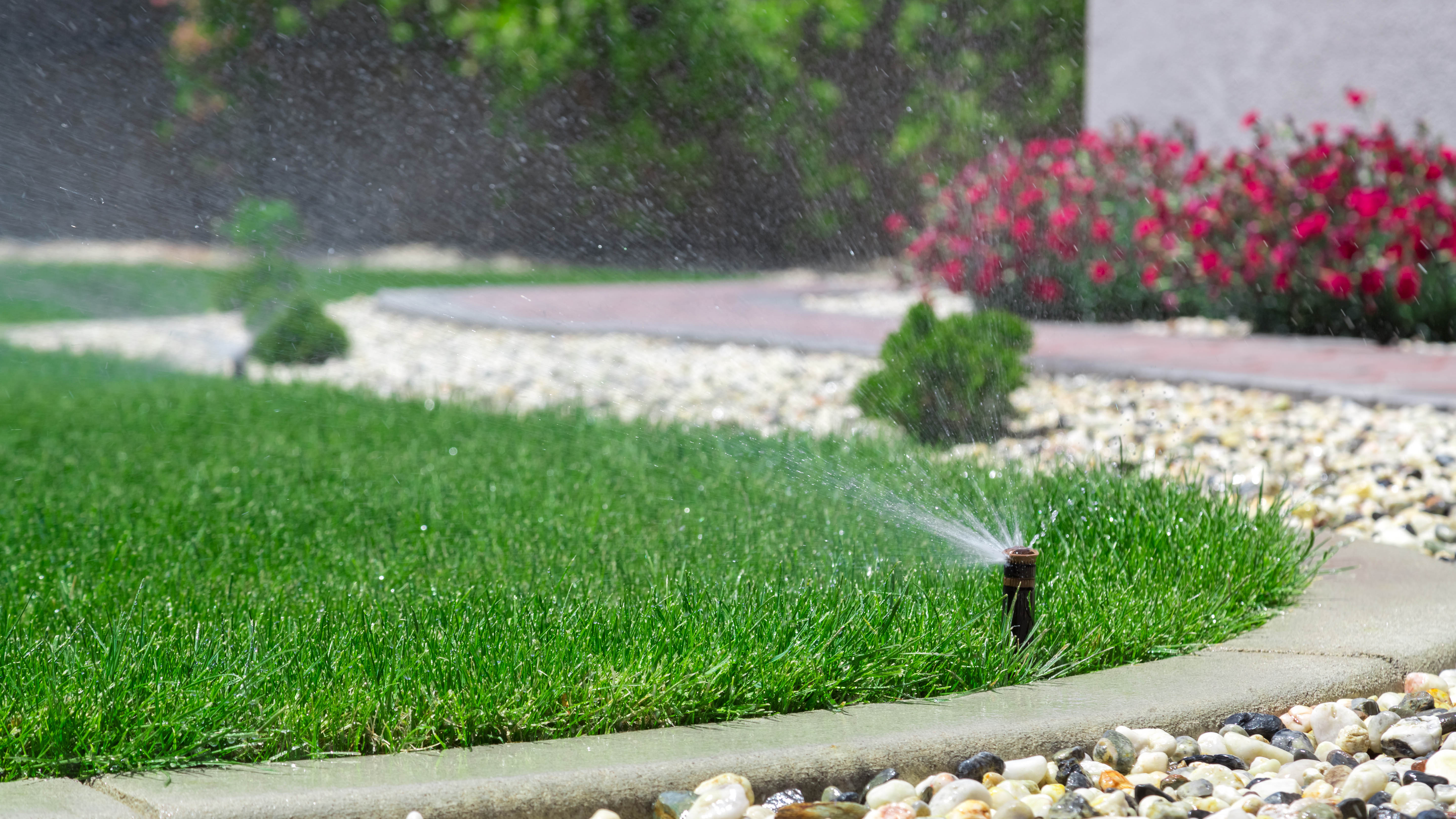
3. You can water at the best time — Smart sprinkler systems generally come with timers nowadays. That means you can water your lawn at the best time and on the best day to suit you and the grass, without moving a muscle. This tends to be early morning, before 10 a.m., because it gives a chance for the water to penetrate the soil before evaporating in the heat of the afternoon; plus, there’s usually lower winds at this time too which can blow your water away. By selecting the best days, you don’t have to worry about the sprinklers getting in your way as you tidy up your yard with the best pruning shears either.
4. You can adjust how much water to apply — While sprinkler systems do generally consume more water versus watering by hand, it’s important to mention that smart systems do let you control how long to water the grass for with each session. You can vary this based on time for better control of how much water you’re consuming. This helps you save on bills and avoid overwatering. Ultimately the latest sprinkler systems give you extended control over this chore, some of which you can adjust straight from your phone. They’re convenient and thorough in terms of customization to say the least.
Cons of sprinkler system
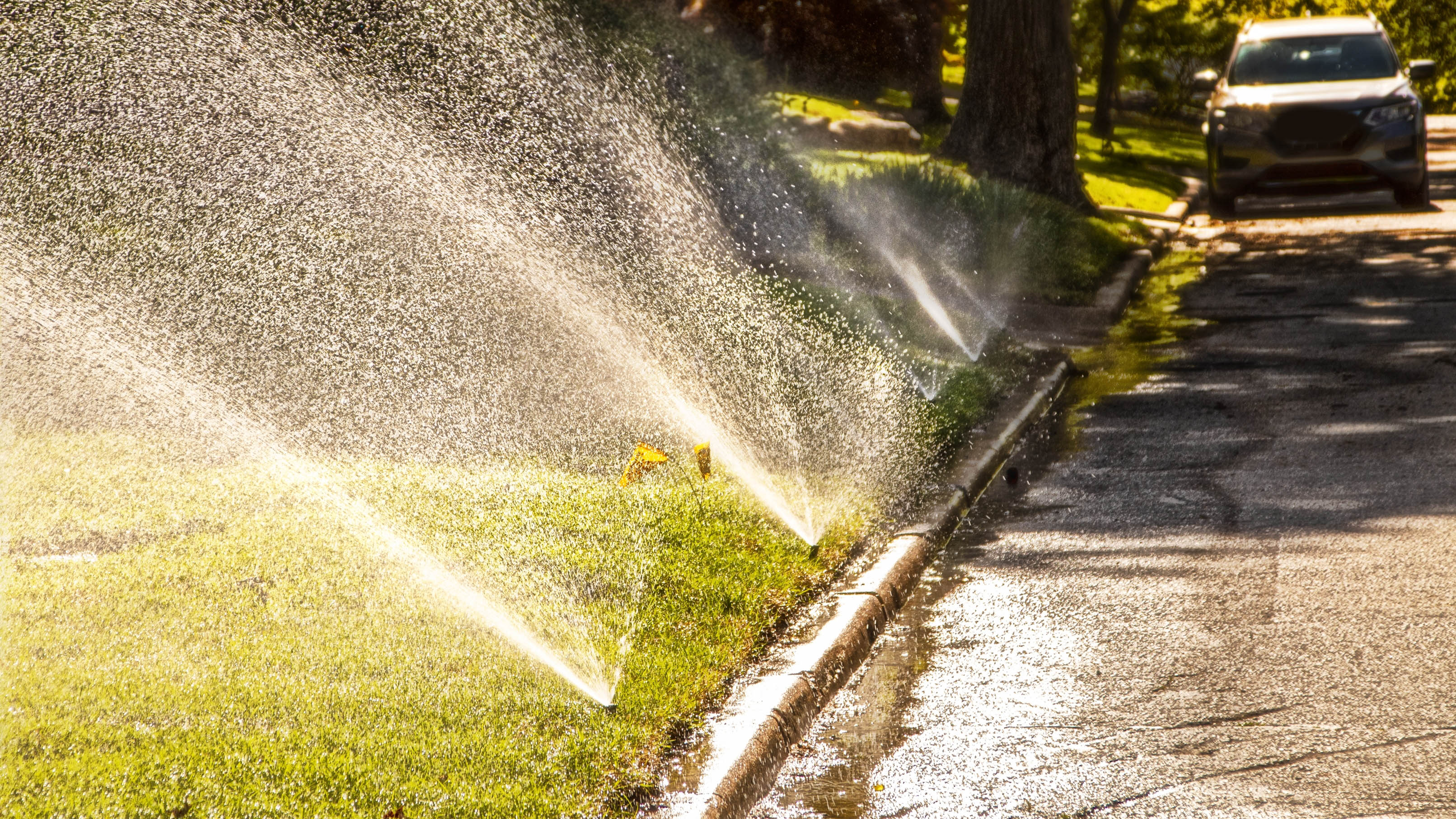
1. Lose a lot to evaporation — Sprinkler systems dispense water finely on your yard — so finely, that it almost looks like a mist. While this technically provides fuller coverage where it hits, it unfortunately means you will lose a lot to evaporation, particularly in the summer while it’s still hot in the mornings. Any such breeze can easily carry it away as well.
2. Run off is easy — Seeing a sprinkler system draining excess water into the road is not an uncommon sight. If you’ve spotted your system doing this, you need to rectify it as soon as possible — otherwise it’s just money down the drain. It could be that a sprinkler head’s direction simply needs adjusting or perhaps you’re overwatering the grass. If your grass seems dry despite this problem, it could be down to the flow rate combined with the solidity of your soil. If the water pressure is too high, the water will simply travel across the surface without penetrating the ground. If you can’t slow the rate, you might want to learn how to aerate a lawn to give it more chance of absorbing moisture in the future.

3. Even coverage not guaranteed — Just because you’ve got sprinkler heads placed every which way you turn, doesn’t necessarily mean you’re getting great coverage. Each sprinkler will have a limit to how far it can apply water, and unless it meets another sprinkler’s reach, there’s going to be a section of grass getting less moisture than the rest of your yard, resulting in slow growth and bare patches. Likewise, some areas may get more water than others, leading to increased growth and thick patches of grass. You need to continually monitor your lawn to make sure it’s getting even coverage across the land. Small adjustments may be necessary to help any struggling patches of grass, or obstructions may need to be removed on occasion. Slopes can cause issues for evenness of coverage too — so make sure your sprinkler heads are placed strategically.
4. Expensive — As touched upon earlier, sprinkler systems do use up more water versus the hose, which is a major drawback. Some water is lost to evaporation or even the wind during application, while excess may run off. Whereas watering by hand provides direct coverage where needed — no more, no less. So a sprinkler system does add more to your water bills. On top of this, advanced sprinkler systems can be very expensive to install. The final price depends on the size of your lawn and how many zones are necessary, but it can cost $1,000’s. Then there’s the maintenance costs to consider as well. If you’ve got a faulty sprinkler head constantly dribbling, that’s as bad as a leaky faucet and needs repairing quickly. A hose is naturally a cheaper and easier option to install.
Pros of using a hose
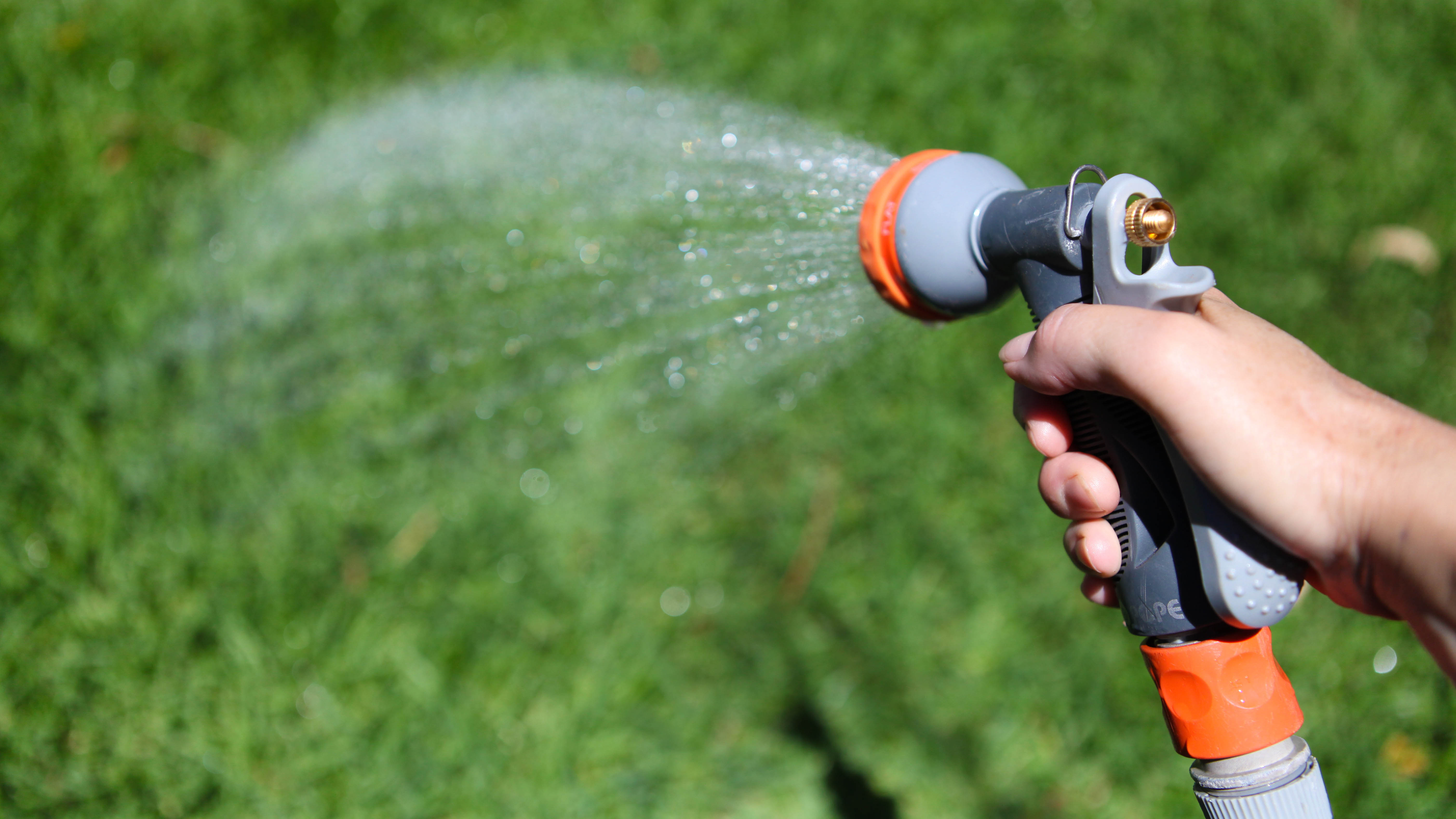
1. Complete control of direction and coverage — The first major benefit is that you have complete control over where the water goes in your yard. With a little care and attention, you can ensure full coverage with minimum waste. That means you don’t need to worry about patches of grass thinning out or leaving bare spots behind. Plus, you know that you’re being sustainable in your water consumption too.
2. Less water consumption and cheaper to install — A hose applies water with thicker drops versus your sprinkler system, so evaporation is less likely to take it away during application, and the same can be said for the wind as well. Plus, because you’re only applying it where needed, you’re naturally saving money versus a sprinkler system which keeps watering until it’s scheduled to stop. On top of saving on your water bills, a hose is naturally cheaper to install as well — some start from as little as $23, such as the AUTOMAN EVA Recoil Garden Hose ($23, Amazon). There’s no maintenance fees to worry about either. So there’s money to be saved all around with this method.
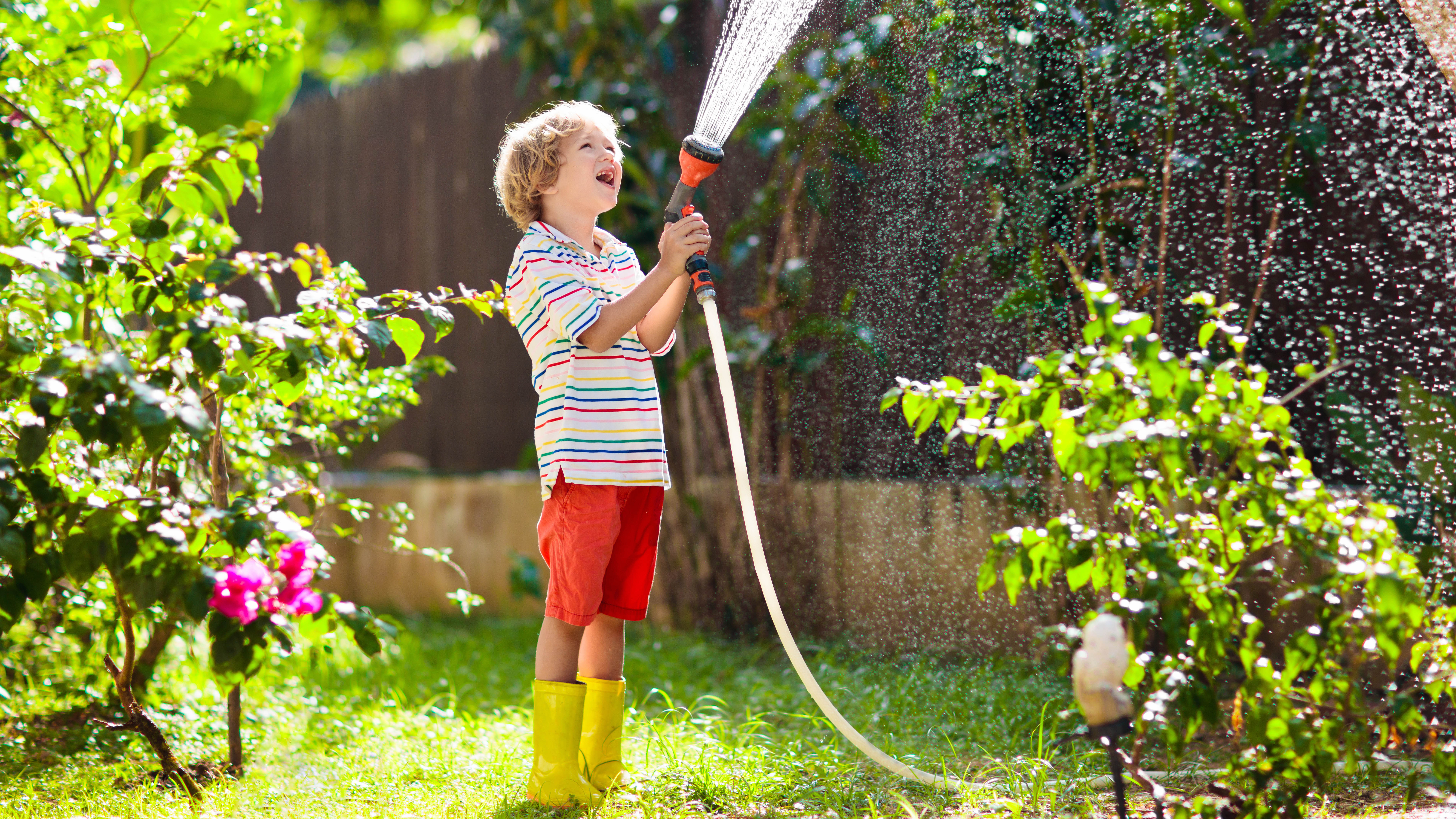
3. You can reach taller plants and areas a sprinkler system can’t — If you’re watering your lawn by hand, you can take advantage of your setup and water your plants at the same time. You can water taller plant beds, reach into hanging baskets and even help your tomatoes get more fruit. Maneuverability and reach is limitless with this method, so long as the hose is a sufficient length — sprinkler systems are much more contained by comparison. If there’s any slopes in your yard, you can ensure it’s getting the moisture necessary here too.
4. You can better see how your lawn responds and adjust appropriately — One of the biggest plus points is that you can better understand what your lawn needs by checking on it yourself, and adjust your routine appropriately. If your lawn still feels moist, you know that it’s best to skip the chore, while if one area is drier than the others, you know to give that patch extra attention, not just in watering, but also in overseeding and fertilizing. Although, be sure to avoid these 5 mistakes you make when applying fertilizer to your yard. By learning what your lawn needs and giving it personalized, rather than just automated care, it’s getting the best treatment possible.
Cons of using a hose
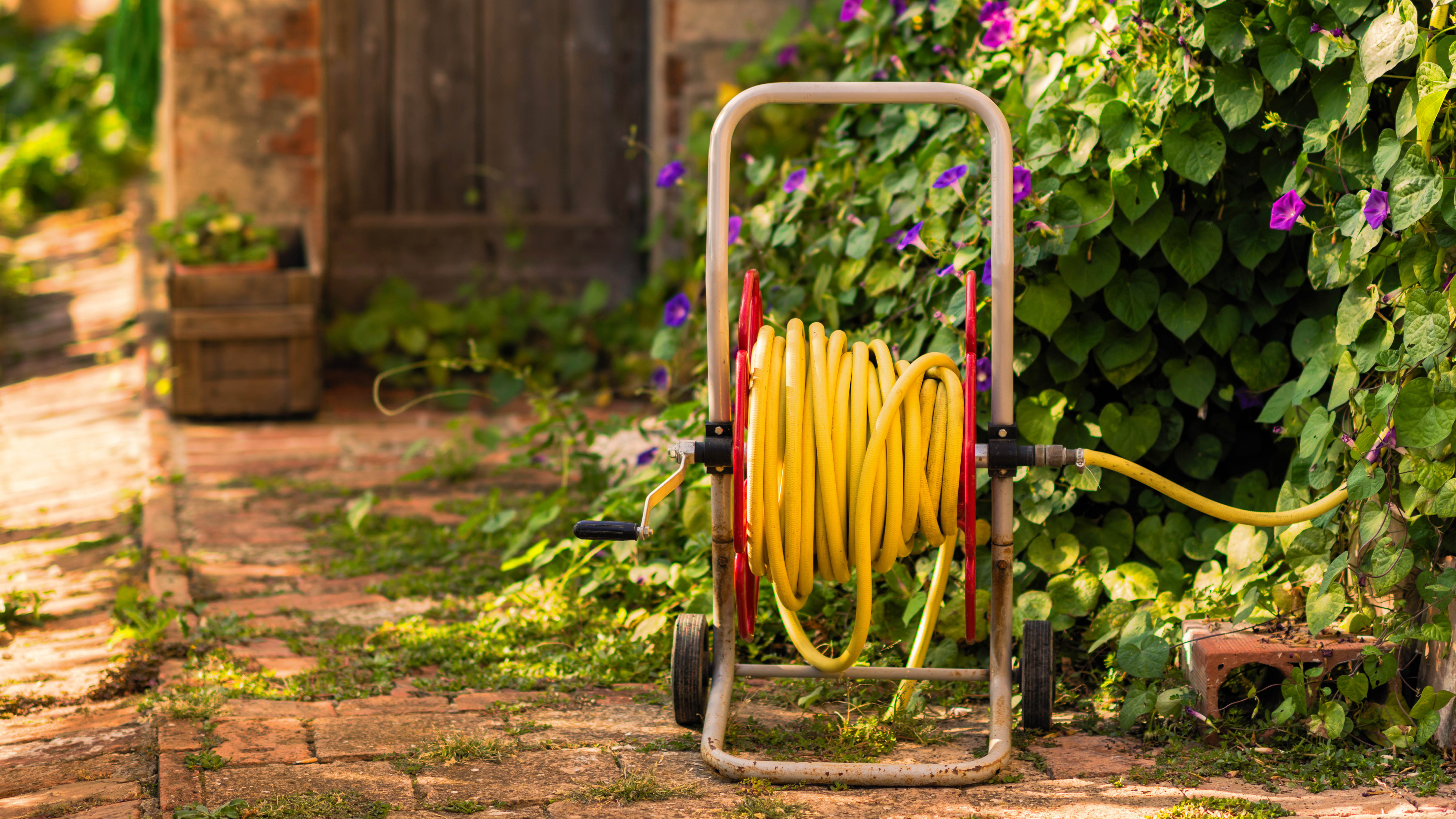
1. Takes time and effort, especially during a heat wave — Yes, it takes time to water your lawn via a hose. It can take upwards of an hour depending on the size of your yard. It also requires effort — while some hoses are extensive in length, you might need to add extensions or move between water sources to reach every area. It’s all too easy to get a bit damp yourself in the process too. So this method needs you to commit some time to get it right, particularly in the heat of summer where regular re-applications will be necessary.
2. Still room for human error — While you can achieve better coverage when watering via a hose, human error is still a definite possibility — particularly if you find the work dull. It can also be difficult to tell where you’ve been unless you feel the grass as you move between sections. It’s best to have a routine in mind when watering your lawn by hand, or a pattern you can follow, to make sure areas don’t go missed. If you miss sections regularly, a sprinkler system will no doubt achieve better coverage.
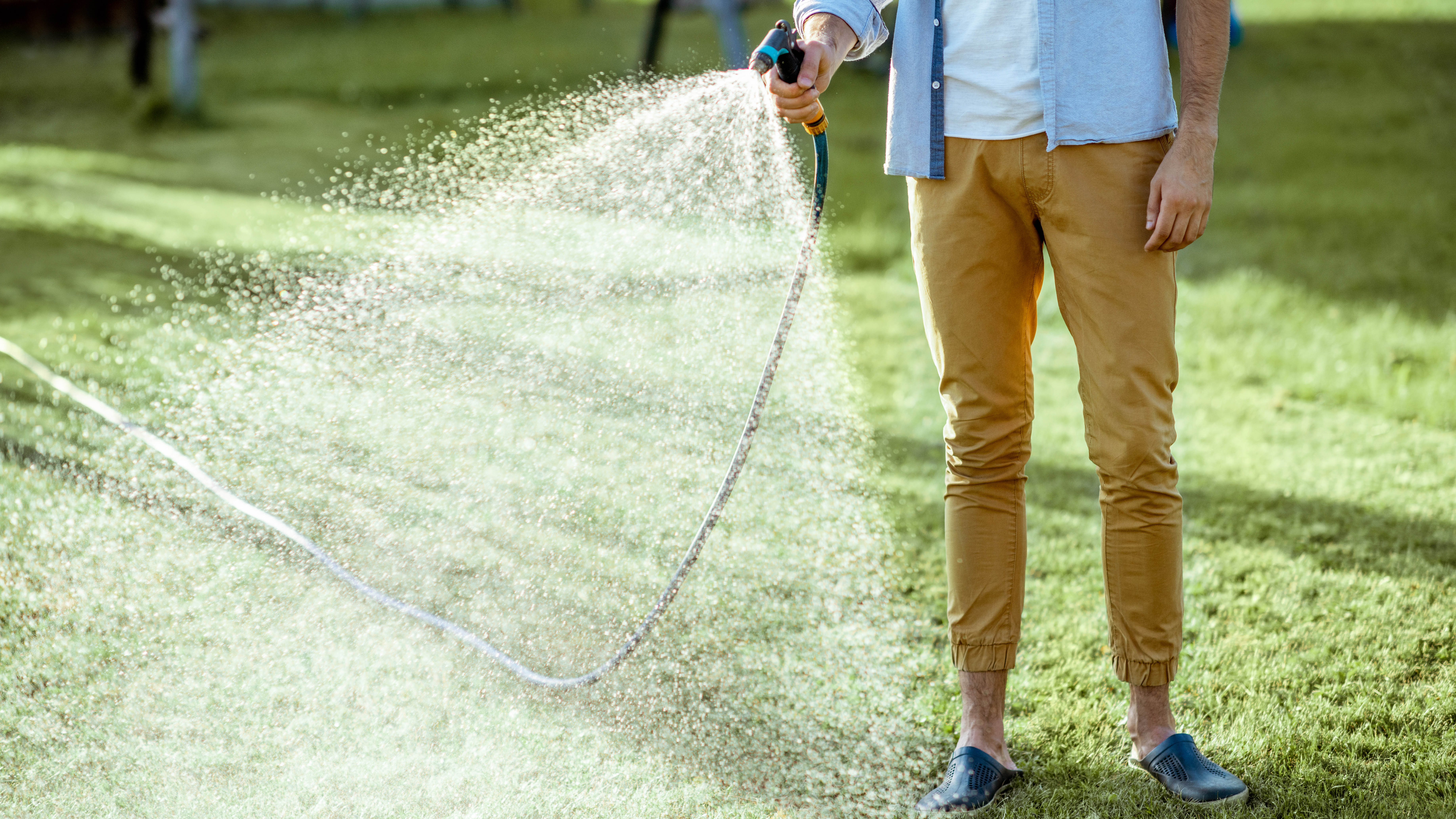
3. Awkward to get around — Dragging a hose around can be a tiresome activity, particularly if the pipe is extensive and heavy. And if the nozzle isn’t comfortable to hold, or you need to keep a trigger constantly pressed in, that can make things painful. Make sure what you plan to use is lightweight and comfortable to handle, with adjustable flow rates to suit your soil. Make sure it doesn’t leak either, otherwise the task will quickly get messy. Always read through online reviews to check this.
Should you use a hose or sprinkler to water your lawn?
Ultimately there are pros and cons to both methods, as you’d suspect. But, in my opinion, if you’ve got the time to give, I think watering via a hose is the better way to go. Because it’s not automated, there’s actually less room for error. By checking the conditions of your lawn yourself, you can make sure it’s getting exactly what it needs, without run off or missed patches. Plus, you will save money on your water bill overall too.
But, if time is tight, or you’re dealing with a large lawn, a sprinkler system is naturally the better option. With customization as advanced as it is with smart sprinklers, the convenience can’t be denied. Whichever you choose, just make sure your lawn is getting the moisture it needs in this heat, without being overwatered.
More from Tom’s Guide
For all the latest Technology News Click Here
For the latest news and updates, follow us on Google News.
